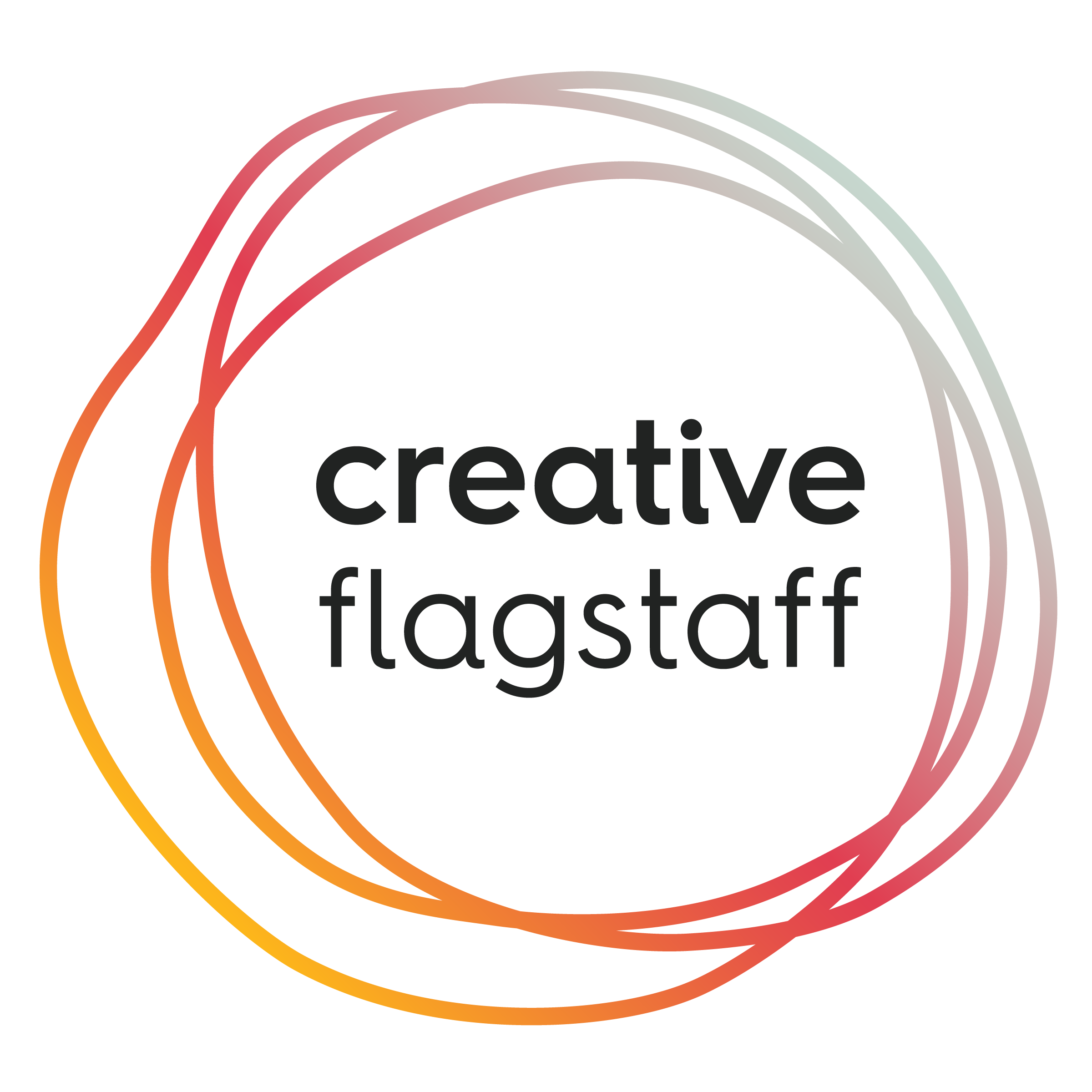
Economic Impact Study: Response to Editorial
The Arizona Daily Sun published an opinion piece last Sunday about the Flagstaff Arts Council’s recently published economic impact study of the non-profit arts and sciences, finding fault with the study’s methodology and findings.
There are some misconceptions in the editorial, so we’d like to take this opportunity to explain the study further, especially given that the authors of the editorial did not contact the Arts Council for clarification or comment.
First, we proudly stand behind Arts & Economic Prosperity, the study of the economic impact of the non-profit arts and sciences, and we welcome any opportunities to discuss the report further. Absent this opportunity, it seems that the authors committed a few errors in their interpretation of the data.
The report studied the activity of non-profit arts agencies, and specifically mentions that individual artists and for-profit arts businesses are not included, so the initial mention of Picasso and Michelango may have misled readers. The study was created to give citizens of Flagstaff an understanding of just one aspect of the benefit and return on their investment into cultural non-profits. The editorial also misses that the study includes the non-profit sciences. The author chooses to ignore the impact of the Flagstaff Festival of Science, Willow Bend Environmental Education Center, STEM City, Lowell Observatory, and others. This is a huge oversight.
The author goes on to compare a completely different study, without providing a reference, that considers the economic impact of Northern Arizona University and may have used a different methodology. The author neglects to recognize that the arts and sciences study includes the College of Arts & Letters within NAU. The two studies don’t exist as two stand-alone silos; they exist as part of an overlapping and complex community.
Lowell Observatory alone has a significant economic impact on Flagstaff. They have an annual operating budget of nearly $12 million. The Museum of Northern Arizona’s budget is over $4 million per year, which one can get a sense of by visiting their campus and their vibrant festivals. The College of Arts & Letters has a $18 million budget. Just based on the spending of these three organizations, which includes considerable staff, we reach more than half of the organization spending ($51 million) that the study calculates by all 50 participating agencies.
The math behind the study dives deeper than organization spending. The study uses an input/output model for studies that was devised by economists at the Georgia Institute of Technology. To derive the most reliable economic impact data, input-output analysis is used to measure the impact of expenditures by nonprofit arts and science organizations and their audiences. This is a highly regarded type of economic analysis that has been the basis for two Nobel Prizes in economics. Many economic studies around the country are based on this award-winning model.
But let’s not stop there. The economists behind the study were careful to remove multipliers and duplication that can make studies seem like an overestimation of value. In fact, the study does not use an economic activity multiplier, which is an estimate of the number of times a dollar changes hands within the community. Using an economic activity multiplier usually results in an overestimation of the economic impact and therefore lacks reliability. So the study avoids it.
When calculating audience spending, the economists behind the study remove the price of tickets and admission, because that spending is included when organizations spend that money. Further, when calculating tourist overnight accommodations, they only count spending on one night stay in Flagstaff. If a tourist stays for four nights, the study includes the cost of a hotel for one night to avoid the assumption that the entire stay was arts-related.
The author of the editorial rightly notes that 91% of locals said they would not travel out of town to attend a Flagstaff event if it were not held here. However, the author then makes a giant leap to assume that means that all their spending when attending an arts event would be transferred to local spending. That is an assumption lacking any basis.
Would those locals go out to eat or have a drink in town if they didn’t have local events to attend? Perhaps they would eat at home. Perhaps some of that spending would be used for a vacation. Maybe they’d stay at home and shop online, sending their hard-earned dollars to Amazon. How many locals would choose to live somewhere else if Flagstaff didn’t have arts and science non-profit organizations? The study doesn’t even factor that impact. Think of the volunteers who make the Festival of Science happen every year, or who serve as volunteer actors in productions at Theatrikos Theatre Company, or hundreds of other events produced by non-profits. Think of the students who live here and spend here because they study the arts at NAU.
The author questions the impact of all that on local jobs. That would be fine if it was more than speculation. At the end of the piece, the Sun editors recommend that the arts shouldn’t measure economic impact at all. Given that the taxpayers of Flagstaff have voted – with nearly 80% of voters tallying ‘yes’ – to approve the City of Flagstaff’s BBB (Bed, Board and Beverage) tax that invests funds into the non-profit arts and sciences, we believe strongly that a study of the economic benefit of the sector is a valuable exercise. The taxpayers deserve the report.
The economic impact report neither devalues or takes the focus off of the other impacts of the arts and sciences. The Arts Council does an economic impact study once every five years. In between those years, the focus is on the quality of life, social impacts, beauty, meaning, and other values the sectors affords our community.
When the Arts Council begins the next economic impact study, we welcome conversations with reporters and editors at the Sun. We appreciate media coverage of this study and welcome probing questions about its methodology and findings. We feel confident that the data withstands thorough scrutiny.








